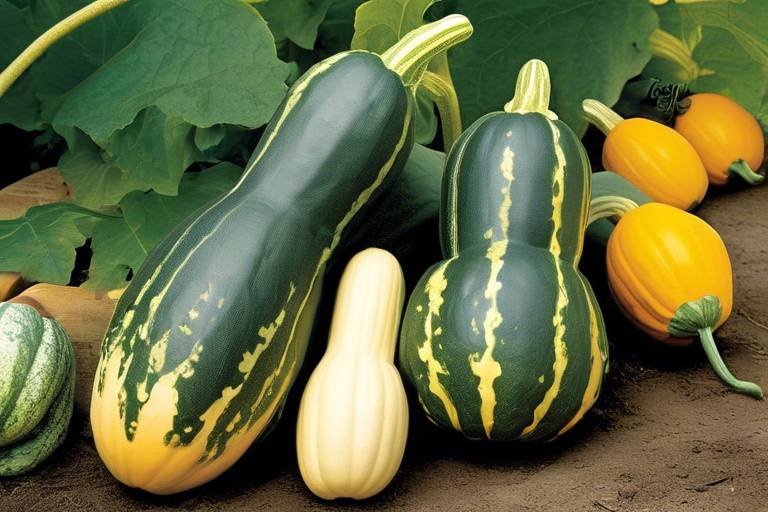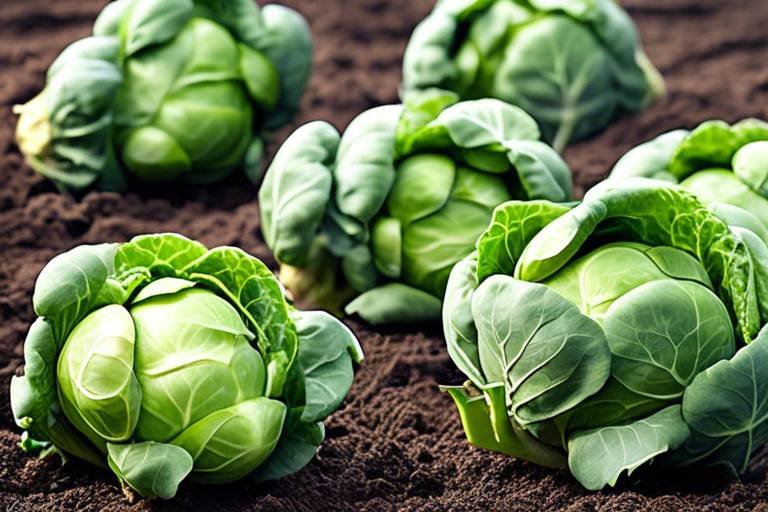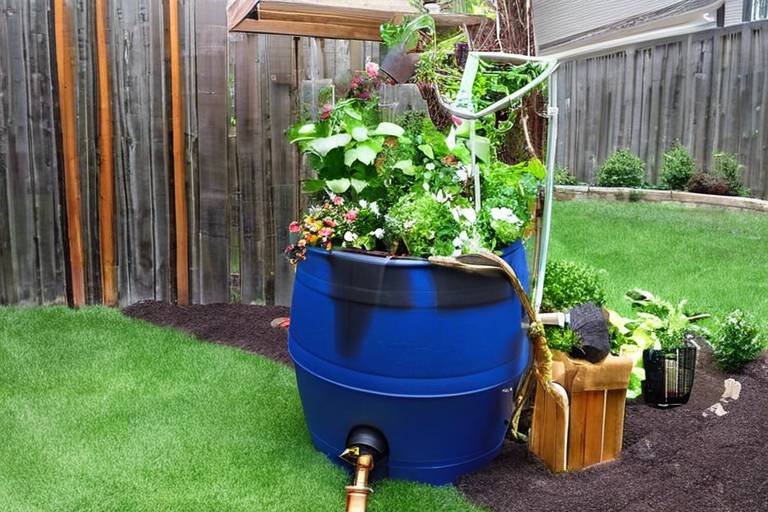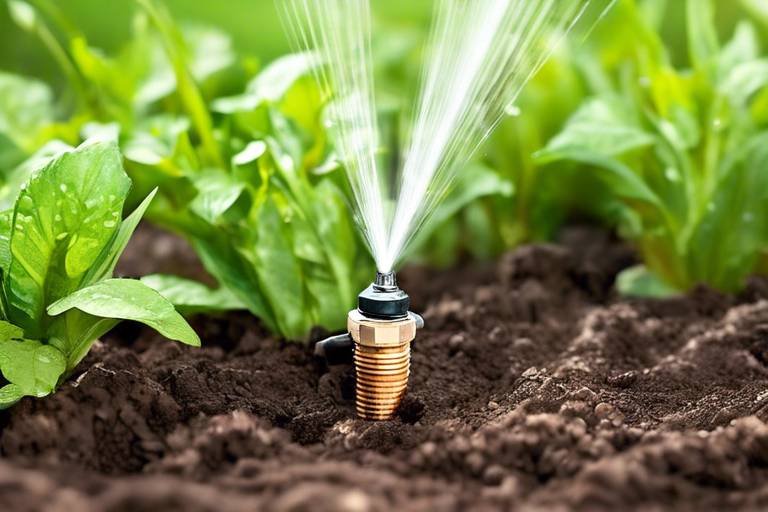Best Tips for Growing Squash in Your Garden
Gardening enthusiasts, get ready to elevate your squash-growing game with these expert tips and tricks! Cultivating squash in your garden can be a rewarding experience, but it requires careful planning and execution to ensure a bountiful harvest. Let's dive into the best practices for growing squash successfully, from selecting the right variety to troubleshooting common issues along the way.

Choosing the Right Variety
Choosing the right variety of squash for your garden is a crucial decision that can significantly impact the success of your harvest. Consider factors such as the available space in your garden, the climate of your region, and your personal preferences when selecting the type of squash to grow. Some varieties thrive in smaller spaces, while others require more room to spread out their vines and produce ample fruit. Additionally, certain types of squash are better suited for specific climates, so it's essential to choose a variety that will thrive in your local weather conditions.
When deciding on the right squash variety for your garden, think about how you plan to use the squash in your cooking. Do you prefer the versatility of zucchini for sautéing and grilling, or are you interested in growing pumpkins for festive fall decorations and homemade pies? Consider the flavor, texture, and color of the squash you enjoy eating to ensure that you will be satisfied with the end result of your harvest.
Another important consideration when choosing a squash variety is the time it takes for the plant to mature and produce fruit. Some types of squash, such as zucchini, are known for their quick growth and abundant yield, making them an excellent choice for beginner gardeners or those looking for a fast harvest. On the other hand, winter squash varieties like butternut or acorn squash may take longer to mature but offer delicious, hearty fruit that can be stored for months after harvesting.

Preparing the Soil
When it comes to growing squash in your garden, one of the most crucial steps is preparing the soil. The foundation of a successful squash harvest lies in the quality of the soil where your plants will thrive. Before you even think about planting your squash seeds or seedlings, it's essential to ensure that your soil is in optimal condition to support healthy growth and development.
So, what exactly does preparing the soil entail? It involves a series of steps aimed at creating a nutrient-rich environment that provides the necessary support for your squash plants to flourish. One of the first things you should do is test your soil to determine its pH level and nutrient content. This will give you valuable insights into any deficiencies that need to be addressed before planting.
Once you have a clear understanding of your soil's composition, you can then proceed to amend it accordingly. Adding organic matter such as compost or well-rotted manure can help improve the soil structure, fertility, and drainage, creating a more hospitable environment for your squash plants.
Proper drainage is another crucial aspect of soil preparation that should not be overlooked. Squash plants are susceptible to root rot if the soil becomes waterlogged, so ensuring good drainage is essential for their overall health. You can achieve this by incorporating organic matter into the soil and creating raised beds if necessary.
Remember, the quality of your soil directly impacts the health and productivity of your squash plants. By taking the time to properly prepare the soil before planting, you are setting the stage for a bountiful harvest and ensuring the success of your squash-growing endeavors.

Planting and Spacing
Learn how to successfully cultivate squash in your garden with these expert tips and tricks.
When it comes to planting squash in your garden, proper spacing is key to ensuring healthy growth and optimal yields. Squash plants require adequate room to spread out and receive proper sunlight and airflow. Before planting, consider the mature size of the squash variety you've chosen and plan accordingly.
One popular method for planting squash is to create mounds or hills in the soil, allowing for better drainage and root development. Plant your squash seeds or seedlings in these mounds, ensuring they are at the appropriate depth for optimal growth.
Spacing is crucial to prevent overcrowding, which can lead to competition for nutrients and increased risk of disease. Different varieties of squash may require different spacing, so it's essential to follow the recommended guidelines for your specific type of squash.
For example, bush varieties of squash typically need about 2-3 feet between plants, while vining varieties may require up to 6 feet of space. Proper spacing also makes it easier to access the plants for maintenance tasks such as watering, weeding, and pest control.
Consider using trellises or supports for vining squash varieties to save space and encourage vertical growth. This not only maximizes space but also helps prevent disease by keeping the foliage off the ground and improving air circulation.
Q: How often should I water my squash plants?
A: Squash plants generally require about 1-2 inches of water per week, depending on the weather conditions. It's essential to water deeply and consistently to promote healthy root development.
Q: What are some common pests that affect squash plants?
A: Common pests that can damage squash plants include squash bugs, vine borers, and cucumber beetles. Implementing pest control measures early on can help prevent infestations.
Q: How do I know when my squash is ready to harvest?
A: Squash is typically ready to harvest when the fruit reaches a mature size and has a firm texture. You can also check the skin for color changes and firmness to determine ripeness.

Watering and Fertilizing
When it comes to cultivating squash in your garden, proper watering and fertilizing are key factors in ensuring healthy plant growth and a bountiful harvest. Watering your squash plants regularly and adequately is essential to their development. Squash plants require consistent moisture, especially during the hot summer months. However, overwatering can lead to issues such as root rot, so it's crucial to find the right balance.
One effective way to ensure your squash plants receive adequate water is by using a soaker hose or drip irrigation system. These methods deliver water directly to the plant's roots, reducing water waste and minimizing the risk of fungal diseases caused by wet foliage. Additionally, mulching around the base of the plants can help retain soil moisture and regulate temperature fluctuations.
When it comes to fertilizing squash plants, using a balanced fertilizer with equal parts nitrogen, phosphorus, and potassium can promote healthy growth. Incorporating organic matter into the soil before planting can also provide essential nutrients for the plants. Avoid over-fertilizing, as this can lead to excessive foliage growth at the expense of fruit production.
Regularly monitoring the condition of your squash plants can help you determine if they require additional nutrients. Yellowing leaves or stunted growth may indicate a nutrient deficiency, in which case a light application of fertilizer can help address the issue. It's important to follow the recommended dosage instructions on the fertilizer package to avoid damaging the plants.
Remember that each squash variety may have specific watering and fertilizing requirements, so it's essential to research the needs of the particular types of squash you are growing. By providing your squash plants with the right amount of water and nutrients, you can set them up for success and enjoy a plentiful harvest.

Managing Pests and Diseases
Managing pests and diseases is a crucial aspect of maintaining a healthy squash garden. Pests such as squash bugs, cucumber beetles, and vine borers can quickly decimate your plants if left unchecked. One effective method to naturally control these pests is by introducing beneficial insects like ladybugs and lacewings, which prey on harmful bugs. Additionally, planting companion plants such as marigolds and nasturtiums can help repel pests due to their strong scents.
When it comes to diseases, powdery mildew is a common issue that squash plants face. To prevent this fungal disease, ensure proper spacing between plants to promote air circulation and avoid overhead watering, which can create a humid environment ideal for mildew growth. Applying a solution of neem oil or a mixture of baking soda and water can also help combat powdery mildew effectively.
Another common disease to watch out for is downy mildew, which thrives in cool, humid conditions. To prevent downy mildew, water your plants early in the day to allow foliage to dry quickly and avoid overcrowding plants. If you notice signs of downy mildew, promptly remove and destroy infected leaves to prevent the spread of the disease.

Pruning and Training
When it comes to cultivating a successful squash garden, the techniques of pruning and training play a vital role in ensuring healthy plant growth and optimal fruit production. Pruning involves the removal of unwanted or excess plant parts, such as leaves or stems, to improve air circulation and sunlight exposure. This practice not only helps prevent disease by reducing moisture retention but also allows the plant to focus its energy on fruit development.
Training, on the other hand, involves guiding the squash vines to grow in a specific direction, typically along a trellis or support structure. By training the vines, you can prevent overcrowding, maximize space efficiency, and make harvesting easier. Additionally, training helps prevent the fruit from touching the ground, reducing the risk of rot and pest infestations.
One effective method of training squash plants is the use of vertical trellises, which not only save space but also promote better air circulation around the plants. This increased airflow can help prevent fungal diseases and improve overall plant health. Another popular technique is the creation of a sling using fabric or netting to support the developing fruit, preventing it from weighing down the vine and potentially causing damage.
When it comes to pruning, it's essential to use clean, sharp tools to make precise cuts without causing unnecessary damage to the plant. Focus on removing any dead, diseased, or overcrowded foliage, as well as any fruit that is not developing properly. Regularly inspect your squash plants for signs of overgrowth or blockage, and prune as needed to maintain a balanced and healthy plant structure.
By incorporating proper pruning and training techniques into your squash gardening routine, you can not only improve the overall health and productivity of your plants but also create a visually appealing and well-organized garden space. Remember, a well-tended squash plant is like a well-trained athlete – with the right care and attention, it can reach its full potential and produce an abundant harvest.

Harvesting and Storage
When it comes to harvesting squash, timing is key. You'll want to keep a close eye on your plants and look for signs that the squash is ready to be picked. For summer squash varieties, such as zucchini, harvesting when the fruits are small to medium in size is ideal. They should be firm to the touch and have a glossy appearance. On the other hand, winter squash, like butternut or acorn squash, should be harvested when the skin is hard and cannot be easily pierced with a fingernail.
After harvesting your squash, proper storage is essential to maintain freshness and extend the shelf life of your harvest. Storing squash in a cool, dry place is crucial to prevent premature rotting. Ideally, squash should be stored in a well-ventilated area with temperatures around 50-55°F (10-13°C). It's important to avoid storing squash near fruits that emit ethylene gas, such as apples and bananas, as this can cause them to ripen and spoil more quickly.
If you have a large harvest and need to store squash for an extended period, consider curing them first. Curing involves allowing the squash to sit in a warm, dry place for a week or two to toughen the skin and improve flavor. Once cured, winter squash can be stored for several months in a cool, dark location. Just be sure to check them periodically for any signs of spoilage and use any damaged squash first before they can spread rot to the rest of your harvest.

Troubleshooting Common Issues
When it comes to growing squash in your garden, encountering common issues is almost inevitable. However, being able to troubleshoot these problems effectively can make a significant difference in the success of your squash harvest. One of the most prevalent issues that gardeners face is blossom end rot, which manifests as dark, sunken spots on the blossom end of the fruit. This condition is often caused by calcium deficiency or fluctuations in watering. By ensuring consistent watering and adding calcium-rich amendments to the soil, you can prevent blossom end rot from affecting your squash plants.
Another common issue that gardeners may encounter is powdery mildew, a fungal disease that appears as a white powdery substance on the leaves of squash plants. To combat powdery mildew, it is essential to promote good air circulation around the plants by spacing them adequately and avoiding overhead watering. Additionally, applying organic fungicides or neem oil can help control the spread of powdery mildew and protect the health of your squash plants.
Poor fruit set is another challenge that gardeners may face when growing squash. This issue can be caused by factors such as inadequate pollination, extreme temperatures, or nutrient imbalances. To improve fruit set, consider hand-pollinating squash flowers using a small brush to transfer pollen between male and female flowers. Maintaining consistent soil moisture and providing balanced fertilization can also encourage healthy fruit development and increase yields.
By proactively identifying and addressing these common issues, you can ensure that your squash plants remain healthy and productive throughout the growing season. Remember to monitor your plants regularly, practice good garden hygiene, and make adjustments as needed to create an optimal growing environment for your squash. With a little troubleshooting and care, you can enjoy a bountiful harvest of delicious squash from your garden.
Frequently Asked Questions
- What are the best squash varieties for beginners to grow?
For beginners, it's recommended to start with easy-to-grow varieties such as zucchini, yellow squash, or butternut squash. These varieties are known for their resilience and adaptability, making them ideal for novice gardeners.
- How often should I water my squash plants?
Squash plants require consistent watering, especially during hot and dry periods. It's generally recommended to water deeply once or twice a week, ensuring that the soil is moist but not waterlogged. Adjust the frequency based on your local climate and soil conditions.
- What is the best way to prevent pests and diseases in a squash garden?
Implementing preventive measures such as crop rotation, proper spacing between plants, and using natural pest control methods like neem oil or companion planting can help deter common pests and diseases. Regularly inspecting your plants for early signs of issues is also crucial for prompt action.
- When is the right time to harvest squash?
Squash should be harvested when they reach the appropriate size and color for the specific variety you are growing. Generally, summer squash is best picked when young and tender, while winter squash should be harvested once the skin has hardened. Check individual varieties for specific harvesting guidelines.
- How can I improve the yield of my squash plants?
To enhance squash production, ensure adequate sunlight, proper spacing, regular fertilization, and timely removal of diseased or damaged foliage. Additionally, practicing good garden hygiene and providing support for vining varieties can help increase yields.



















